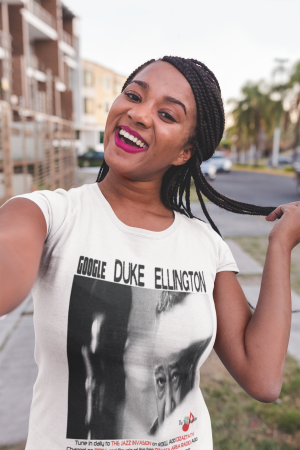Duke Ellington
Though Ellington took piano lessons, he was more interested in baseball. "President Roosevelt (Theodore) would come on his horse sometimes, and stop and watch us play", he recalled.[11] Ellington went to Armstrong Technical High School in Washington, D.C. His first job was selling peanuts at Washington Senators baseball games.
Ellington started sneaking into Frank Holiday's Poolroom at age fourteen. Hearing the music of the poolroom pianists ignited Ellington's love for the instrument, and he began to take his piano studies seriously. Among the many piano players he listened to were Doc Perry, Lester Dishman, Louis Brown, Turner Layton, Gertie Wells, Clarence Bowser, Sticky Mack, Blind Johnny, Cliff Jackson, Claude Hopkins, Phil Wurd, Caroline Thornton, Luckey Roberts, Eubie Blake, Joe Rochester, and Harvey Brooks.
In the summer of 1914, while working as a soda jerk at the Poodle Dog Café, Ellington wrote his first composition, "Soda Fountain Rag" (also known as the "Poodle Dog Rag"). He created the piece by ear, as he had not yet learned to read and write music. "I would play the 'Soda Fountain Rag' as a one-step, two-step, waltz, tango, and fox trot", Ellington recalled. "Listeners never knew it was the same piece. I was established as having my own repertoire." In his autobiography, Music is my Mistress (1973), Ellington wrote that he missed more lessons than he attended, feeling at the time that piano was not his talent.














































